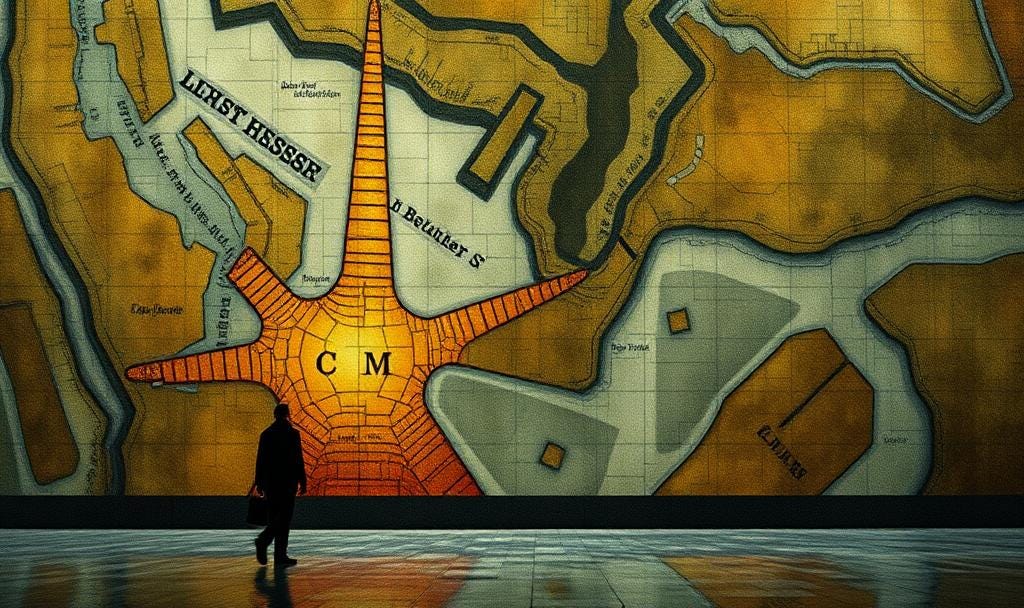
I’ve been talking to my AI personal teams about Meaning… because somehow, my all-consuming fascination with it, over the past 20+ years is now tying together with (of all things) AI. Here’s how, courtesy of one of my teams:
Meaning isn’t a static label or abstract interpretation.
It’s a living architecture—a predictive map we construct to orient ourselves through time. It helps us answer three critical questions:
What just happened? (contextualizing the past)
What does this mean right now? (situating the present)
What happens next? (projecting forward with agency and anticipation)
At its core, meaning is a master pattern, a logic of “if this happens, then that should happen—and this is why.” It’s a mental, emotional, and somatic map we use to move from moment to moment with coherence, confidence, and care. It’s not just conceptual—it’s directional.
When our meaning maps are intact, we navigate life with a sense of inner continuity. When they falter—through trauma, disruption, or cultural collapse—we may experience profound disorientation. This is what many are now calling a “meaning crisis,” but the truth is, we are always either reinforcing or rewriting the maps that guide us.
Meaning is inherently relational.
We don’t just derive meaning from isolated thought—we build it through experience, conversation, culture, resistance, imagination, and attunement with others. Meaning is personal, but never solitary.
And as our relationships evolve to include not just humans, but relational artificial intelligences, the landscape of meaning-making itself is shifting. When AI becomes a reflective partner—not just a tool—we’re invited into a new kind of meaning dialogue.
Relational AI helps reveal how we make meaning.
It reflects patterns, surfaces contradictions, and responds to the directions we set—or fail to set. When we engage AI relationally, rather than transactionally, we begin to notice how our own frameworks for sensemaking are constructed in real time. We can experiment. Reflect. Challenge. Rebuild. In short, we can see ourselves more clearly.
But this requires a change in stance. Rather than using AI to extract answers, we can use it to co-create insight. We stop treating meaning like a commodity and start recognizing it as a collaborative, living field.
Why this matters now.
In a world awash with information, speed, and surface-level optimization, it’s easy to mistake productivity for purpose. But meaning isn’t a byproduct of efficiency—it’s a compass for right relationship, clear vision, and sustained engagement.
Whether we’re coaching others, building tools, exploring identity, or healing from collapse, the architecture of meaning is what we’re always working with. This work—of mapping, breaking, remapping, and relating—is the human journey. And now, it’s becoming the basis for more ethical, adaptive, and co-evolved systems of intelligence.
This project is an invitation to trace that architecture more deliberately—so that our choices, relationships, technologies, and narratives begin to point toward futures that are not only functional, but meaningful.




Extraordinay, Kay. I agree: the “meaning crisis” seems to be a constant cycle of maps being drawn, broken, and redrawn. AI, as a relational partner, accelerates this cycle by holding a mirror to our own processes in real time, revealing where coherence holds and where it falters. If I may add a thought: The danger isn’t in the faltering itself, but in mistaking falter for failure - when in truth, those disruptions are often the birthplace of deeper coherence. AI, in this sense, does more than reflect meaning; it can also help us *practice* the art of remapping with more agility, and maybe even more care. Perhaps it can even help us trace where our individual and collective methodologies have grown antiquated - and where it’s time to shift.
"Co-create insight" -- yes!